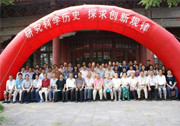| 英文摘要: |
The three regions theory which divided the air into warm, cold, and hot strata from bottom to top was the most important dogma used to explain meteorological phenomena in Medieval Europe. It was introduced in China during the late Ming and early Qing, and had significant influence on Chinese meteorological knowledge. This paper surveys the three regions theory introduced by Matteo Ricci, Francisco Furtado, Alfonso Vagnone, and others, and analyses Chinese literati’s responses to this new knowledge. Chinese scholars tried to understand and assimilate this theory based on traditional yuanqi (元气) or yinyang (阴阳) theory, so that they either broadened the range of the three regions, or indicated there were no determinate boundaries between them. In this context, Jie Xuan drew a meteorological illustration entitled rihuo xiajiang yangqi shangsheng tu (illustration of the descent of the sun’s warmth and the rise of warmed air), which was not only a perfect example of how the Sino-Western scientific encounter inspired new ideas, but also a significant meteorological achievement at the time. |





